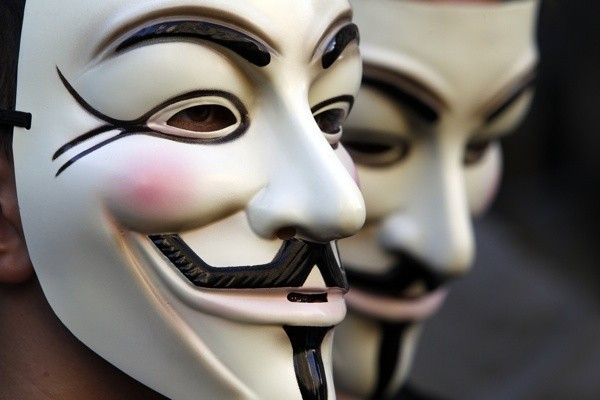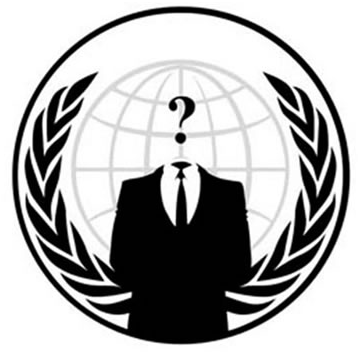The Changing Face of Anonymous
Anonymous is an amorphous online collective which, by its very nature, is recognised only through the use of the iconic Guy Fawkes mask. However that mask may be slipping ever so slightly, revealing a little more about the current state of the nameless group, which lacks a public face or a traditional power structure.

Anonymous has been around for almost a decade now, beginning life on the 4chan forum back in 2003. However it was only in 2010 that the hactivist collective came to the attention of the public, with a series of high-profile attacks on high-profile targets, among them the FBI, Sony and Nintendo.
However, since the group's leader was revealed to be an FBI informant in March of this year, the group has been left adrift somewhat, without a recognised leader. Despite being named amont the ts profile has since dipped and its name has slipped from the pages of mainstream newspapers and websites around the world.
However, while it may not be carrying out the type of attacks which will garner it headlines, regional variations are quietly carrying out attacks on smaller targets, all in the name of Anonymous.
Each of these regional variations of Anonymous brings with it its own particular style, be that in the type of attack used, the targets chosen and the reason for the attack in the first place.
While the global Anonymous group seems to have gone to ground for the moment, it still flexes its muscles when it deems necessary. It is a reactive force these days, responding to incidents as and when it sees fit.
Looking at some recent attacks, it is clear to see that Anonymous looks to be standing up for the little guy, the perceived underdog, as well as those who would chose to cross them.
In recent weeks we've seen an attack on the Syrian government, an attack on a French company looking to register the Anonymous motto and logo, and just this week promised attacks on the groups which took down Wikileaks and Torrent-tracking website Demonoid.
Another reactive attack which gained less media coverage was the attack on a fellow hacker, who was looking to impress the senior members of the Anonymous collective.
Defaced website
A hacker, based in Madrid, penetrated and defaced the website of RedSky, a New Zealand-based video production company which produced a documentary about the effects of poverty on children, the profits from which were passed on to a charity.
The attack, by a person calling themselves AnonVoldermort, was carried out to impress the members of Anonymous but did the opposite, provoking their anger by breaching an unspoken rule of the group - not to attack charity websites.
Within 24 hours of a plea on Facebook from the boss of RedSky, Bryan Bruce, an email with the details of the hacker was delivered to his inbox.
The global Anonymous group may be quite at the moment, but its claws are still sharp when needs be, but for now it only uses them when provoked.

Proactive actions from Anonymous are almost non-existent at the moment. One planned attack. which was conceived in the Netherlands, Operation NewSon, never occurred. The objective: attack the wealthiest, biggest companies worldwide. According to the web page promoting the attack, they wished to:
"Attack several high corporate entities. Shortly after the start of the operation, we plan to release precious classified data on the already set out list of targets we do have. Those targets are none other then the ones who ultimately rule: the high revenue making companies of the world. While attacking the major companies of this planet may seem lulzy, we also wish that this operation make a difference."
Despite garnering some media attention, the campaign never even got off the ground.
Regional Anons
The situation is somewhat different if you look at specific groups based around the world. While most of the senior Anonymous members seem to be based in Western Europe and North America, we've seen a lot of groups popping up in South America, Asia and Eastern Europe.
Some of the best examples of these pop-up Anonymous groups have appeared in Latin America. In Brazil, Argentina and Mexico there have been numerous attacks which did not react to any specific incident.
These attacks were carried out simply for the sake of it. Security firms find it difficult to track the volume of attacks taking place around the globe, but Rob Rachwald from Imperva says: "It seems quite clear that this category of attacks is much higher by volume."
For example, in Brazil groups aligning themselves to Anonymous have attacked several major Brazilian government agencies, two major airlines and most recently took down most government agencies in Rio.

Next door in Argentina banks and government agencies have also been the target of regional Anons.
Having recently written that Anonymous is waiting for a new leader to emerge, I received several emails and tweets from people claiming to be members of Anonymous who say the group has no structe and no leaders.
This is simply not the case. While the idea of a truly democratic group where the newest member of the group has the same say and respect as the oldest member muight be one Anonymous aspires to, it is not a sustainable practice.
To become a member of Anonymous requires you to fill out no forms. You have to sit no interviews. You don't need any qualifications. All you need to do it say you are an Anon.
This means that anyone can become a member of Anonymous and without some sort of hierarchical structure, it would be useless. Whether the current structure has come about organically or has been put in place by the older members is unknown, but some structure is in place with a leader yet to emerge to take Sabu's place.
Rachwald believes that a Globally Anonymous will return to proactive attacks and warns that we should be watching out for incidents which could spark a "global resopnse."
© Copyright IBTimes 2025. All rights reserved.






















